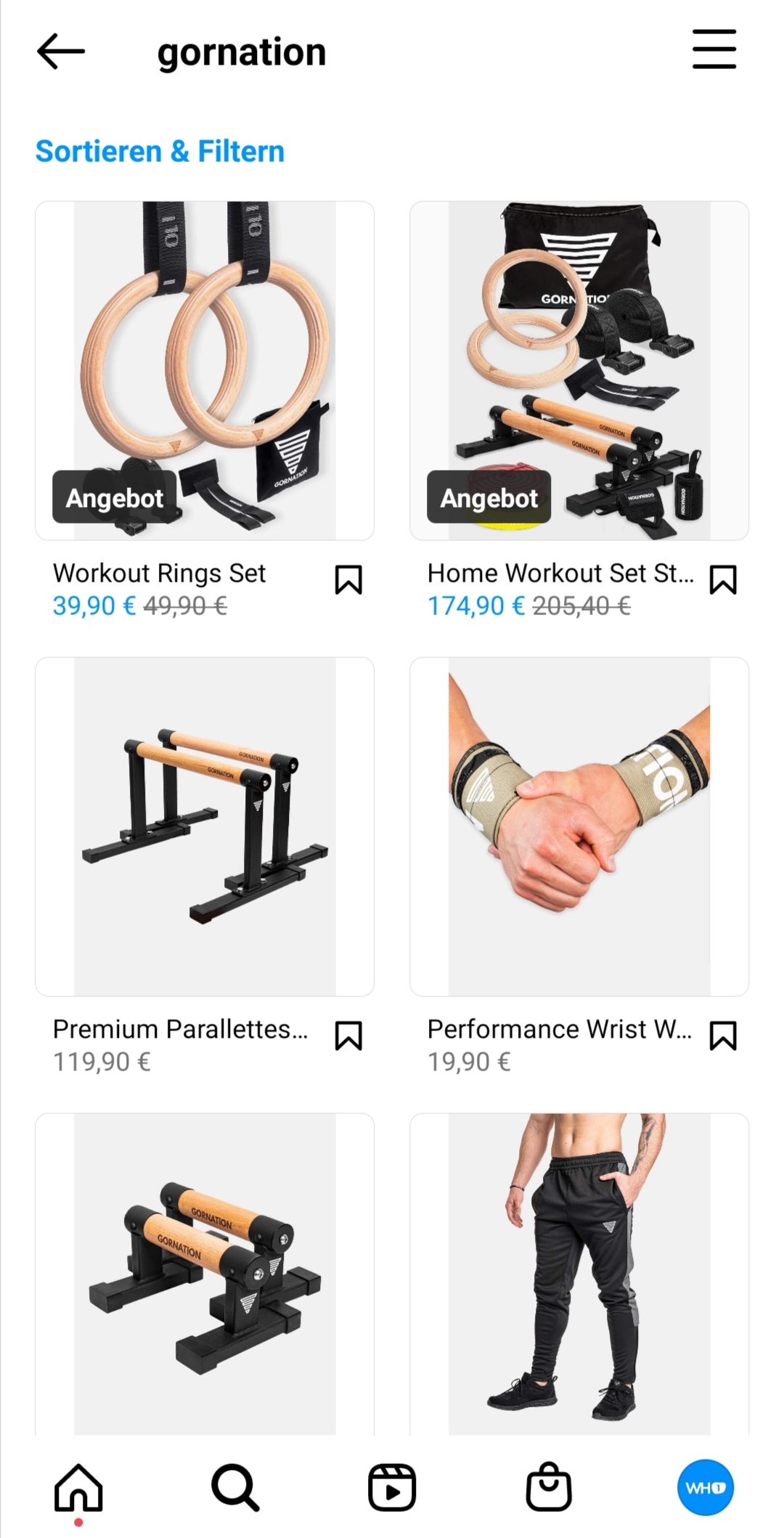Retailers have always tried to reach their customers with their products where they spend a large portion of their time. Social commerce accomplishes this with unprecedented efficiency. Social commerce, social selling or social media shops – no matter the name of choice – brands can offer their customers a convenient shopping experience via social media.
And the potential of social commerce is huge! In a survey, Hubspot found that 50 percent of the U.S. respondents had already made a purchase via a social media platform at some point. German consumers are currently still warming up to this sales channel. A YouGov study found that 20 percent of German users have already purchased products on Facebook, Instagram and Co. at least once - and the trend is rising!
But for which companies is it worth considering entering social commerce? Find out what to look out for when setting up a social media shop and learn more about this e-commerce trend? We have summarized the most important key takes on social media shops for you.
What is social commerce?
Social commerce involves the sale of goods via social media platforms. The most important platforms for social selling are Facebook, Instagram, TikTok, WhatsApp and Pinterest. But even the video platform YouTube is already testing sales functions on its site. E-commerce brands have the opportunity to attract customers to their sales channels via a good social media presence, thereby significantly increasing their conversion rate.
Of course, you also need to keep an eye on the cost structure behind social commerce. Facebook, for example, charges 5 percent of revenue as a transaction fee (at least €0.40 for shipments under €8.00). Other platforms charge similar fees.
Every German spends an average of 89 minutes a day on social networks. For people between the ages of 16 and 19, the average is closer to 150 minutes. The idea behind social commerce is simple: reach customers where they spend a significant amount of their free time and make the sales experience as engaging and convenient as possible. Ideally, users won't even have to switch apps to complete the purchase. E-commerce brands can engage users directly and creatively on the relevant platforms. That's part of the charm of social commerce.
But with fresh opportunities come new challenges. Shops must pay particular attention to marketing and Fulfillment Only then can they offer their customers a first-class shopping experience via social channels.
Social commerce creates new challenges for marketing
Social media has taken advertising to a new level. Marketing has never been more about engagement and interaction. Opportunities to reach your customers as a direct-to-consumer (D2C) brand through social media channels are numerous. But social media marketing can also mean significantly more work. Target groups can be determined very precisely in the platforms' ad managers. Nevertheless, creativity is needed to encourage potential customers to engage with your post.
As an online shop, you also need to make sure to interact with your social media community and encourage them to share content. Especially small D2C brands with a moderate marketing budget can benefit. With creative, targeted, and shareable content, you can significantly increase your organic (and therefore cost-effective) reach.
To achieve a wide reach and a strong impact, collaboration with influencers is a good option for many brands. In tagged advertising, they bring your products to life. Niche products also work well in collaboration with influencers. You can reach even the most unusual target groups via so-called micro-influencers.
In social commerce, customers can further become multipliers. That's why it's especially important to offer an excellent sales experience in addition to a great product. This includes everything from the first click to a smooth and transparent fulfillment process to the unboxing experience. After all, if you charm your customers, they'll be all the more willing to share your experience, and thus your product, with their own community.
Which industries should consider a social media shop?
Anything that can come to life in pictures and videos can be sold via social commerce. However, products that you can present in such a way that offers viewers additional value are particularly suitable for social commerce. Makeup brands, for example, give their followers valuable advice with skin care tips and makeup tutorials. Fashion brands present new ideas on how to combine and coordinate certain items of clothing. And food manufacturers can wow you with tasty recipes and cooking videos.

Warehousing1-Kunde GORNATION bietet seiner Community über Instagram Inspiration für anspruchsvolle Workouts und verlinkt direkt zur Trainingsausstattung in Ihrem Instagram-Shop
However, due to the different average user age, you should know your target group exactly and check which networks your potential customers are on. If your target group is between 50 and 69 years old, you are better off on Facebook than on Instagram. Because while 10 percent of this age group can be found on Facebook, only about 1 percent have an Instagram account. If your target audience is between 14 and 29 years old, you should target Instagram, because 54 percent of users of this age have an account on the platform. Of course, you can also sell on multiple platforms. But maintaining a social media shop is time-consuming. Therefore, you should consider on which platform your presence is worthwhile.
Does social selling work with my shop system?
When setting up your social media shop, there’s one more thing you need to consider. Make sure that all transactions from your various sales channels come together in one shop system and are transmitted properly to your fulfillment service provider. This will prevent inventory errors. Because these make for unhappy customers.
Fortunately, Shopify and other shop systems already offer integrations with the native platform systems of Facebook, Instagram, TikTok, and Pinterest. If you connect the systems properly, the various shop systems should be fully integrated. This way, your customers can also check out via the Instragram shop without having to leave the app. E-commerce brands in the EU should note one more thing here.

Currently, the checkout function on Facebook and Instagram is only available for shop operators in the USA and the UK (as of February 2022). In Germany, social media shops usually link to the optimized website of the online shop. This has advantages and disadvantages. On the one hand, it reduces the convenience factor of the shopping experience, as the customer may have to register once more for the checkout. On the other hand, by logging in to your website, the customer becomes your customer and hopefully finds his or her way directly to your online shop in the future.
Another advantage is that you don't have to worry about shop system integration. This makes it easier to handle the fulfillment processes properly in the background. It is not yet clear when the checkout function via Instagram and Facebook will be available in Germany and the rest of the EU.
Social Commerce and Fulfillment
Many brands use their social media shops for special promotions in which a lot of goods need to be moved quickly. You need to consider this in your logistics processes. Short-tail businesses, in which shops sell a few curated items in large quantities, are often closer to promotion logistics in terms of fulfillment than to normal e-commerce fulfillment. It may be advantageous to logistically separate large social commerce promotions from your main business. Otherwise, the promotional business with its large volumes may interfere with the fulfillment of your main business.
No matter how you use social commerce for your brand. Customers are all about convenience. That's why the shopping process should be as convenient as possible, from the first click to delivery and unboxing. Your fulfillment processes in the background must run perfectly. When picking your fulfillment service provider, pay particular attention to a low error rate in picking and fast shipping times.
Need help setting up your fulfillment for an online or social media shop? Or you would like to put your current setup to the test without obligation? Submit a request now. One of our consultants will contact you promptly.



